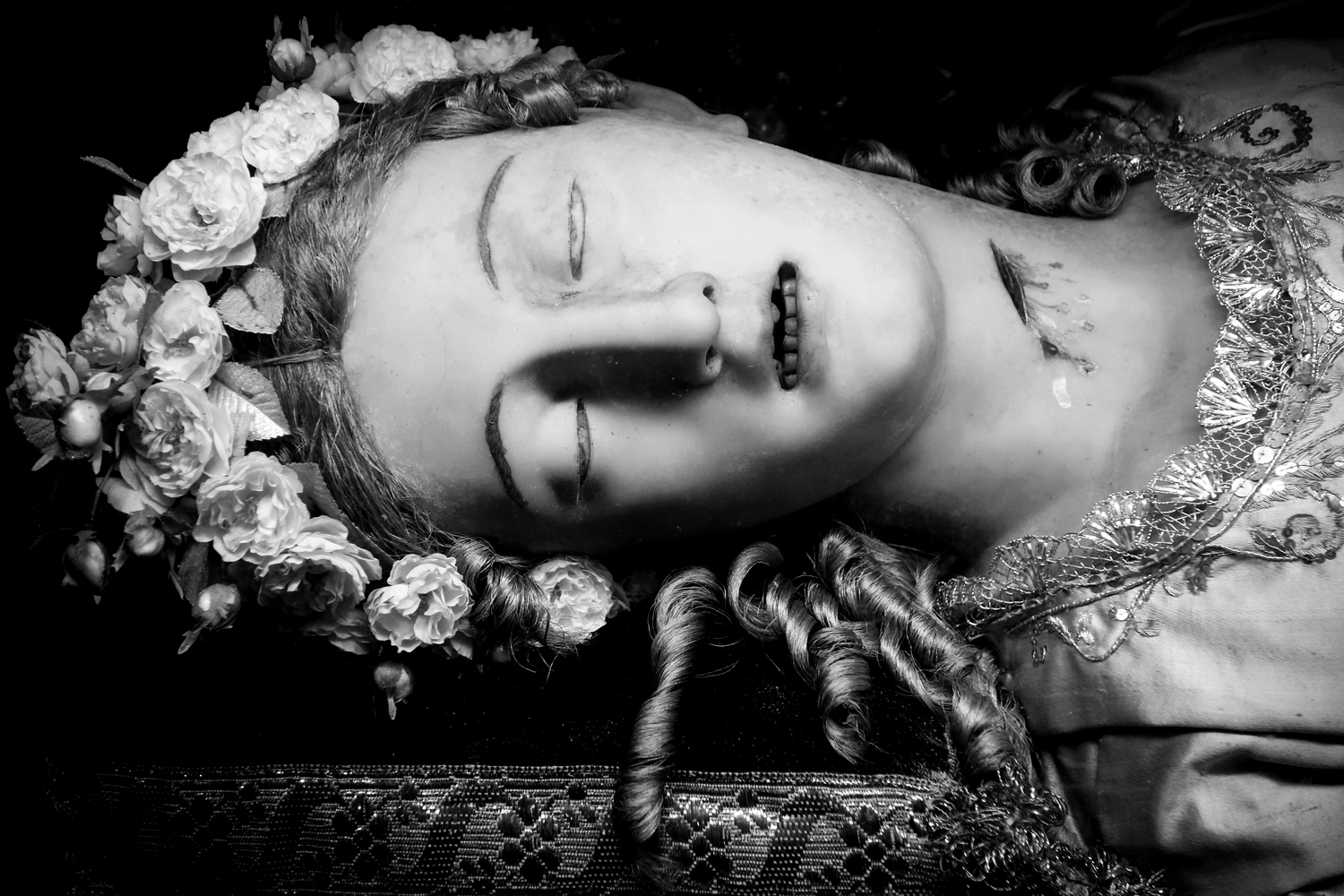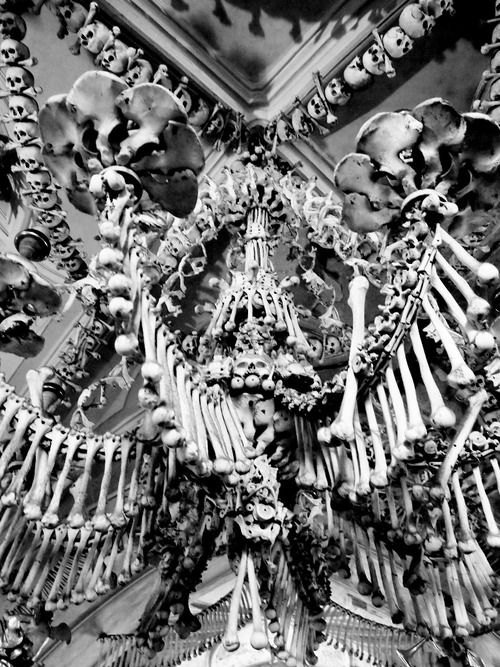Tell us about your work, Elizabeth.
I photograph and write about the unusual (and often macabre) things I find in Catholic churches—incorrupt corpses, holy relics (which are often the preserved body parts of saints), memento-mori tombs, exotic taxidermy, human bone art… Basically the kind of things people might see while touring an old church but also might not fully understand. I want to make the meanings of these things more accessible. But I also want to talk about why they’re worth preserving and think about how they’re still relevant.

What are you working on this year?
As I write this I’m on my way to Zamora, Spain for their famous Holy Week. It’s basically a whole week of ritualized funeral processions before Easter. I also have an essay coming out in the Paris Review in a week or two. It’s about a naked mummy named Uncle Vincent. A bunch of people in a small town in Italy decided he was a saint against the Vatican’s wishes and put him on display. Then this summer I’ll be speaking at the Death & the Maiden conference at the University of Winchester, talking about what holy relics have to do with the Romantic obsession with beautiful dead women. Finally in the October, I have an essay coming out in Death: A Graveside Companion, published by Thames and Hudson with fellow Order member Joanna Ebenstien. It’ll be a great Halloween read.
What does death positivity mean to you?
For me, it means uncovering and reintroducing ways people in the past made death an undeniable, meaningful part of life—think of all those classic crypt inscriptions like “Today me, tomorrow you”. But it also means investigating how a lot of our ideas about death and the body were shaped by Catholicism in less positive ways—it’s how a lot of paternalistic and colonial attitudes spread. But hopefully I hook people with the weird, macabre stuff and leave them thinking about the bigger questions—What do I think happens to the dead and where did those ideas come from? How are the living supposed go on? How has our modern, secular idea of death been shaped by these older ideas? And most importantly, how do we grapple with all of that today—what can we learn from the past and what can we work to correct?

What other death-related job that you don’t have, would you want?
I probably think about joining the “Company of Death” in Rome too much… monthly at least. They’re kind of a grief-related charity today but what I daydream about is joining the group of nuns who oversee the company’s baroque crypt of bones under the church of Our Lady of Eulogies and Death. I could give tours of their crypt and print up brochures. If they need me to wear a long black skirt, that’s also not a problem—it’s already part of my look. But renouncing the world… well… I’d make a bad nun on that front so I probably won’t get my dream job any time soon.
When you die, what do you want done with your corpse?
This is weird even by Order of the Good Death standards and I think impossible, but I’m being serious. I would like to be a chandelier. I want my bones dried out, disassembled, made into a hanging lighting fixture and wired up. You can see other people-chandeliers in crypts all over Europe. It really isn’t done anymore but I think I have good reasons. Since being the aforementioned crypt-keeper isn’t really in the cards (but call me if something opens up) my real job is in lighting design. So becoming a lighting fixture makes perfect sense. And I love seeing bone chandeliers that used to hold candles now wired up with flickering LED light bulbs in some of these crypts. What an amazing afterlife. I could illuminate, evolve with new technology, become art… what could be better? And at the heart of it, few things have given me more pleasure and meaning in life than contemplating my own life in these crypts. So I’d like to provide the same as a service to the living… and light their way.

Can’t get enough Elizabeth? (We can’t either), check out her blog, All the Saints You Should Know featuring her photography and equally stunning writing. Not to be missed are Elizabeth’s pieces, Appetite For Destruction from Please Hold Magazine and Our Adored Cadavers, in Hazlit.
Elizabeth has been featured in Vice , Los Angeles Magazine and Swide: The Dolce & Gabanna Luxury Magazine. You might also remember her from her two Ask a Mortician appearances – How to Tell if Your Saint is Incorrupt and We’re Here to Ruin Santa.

